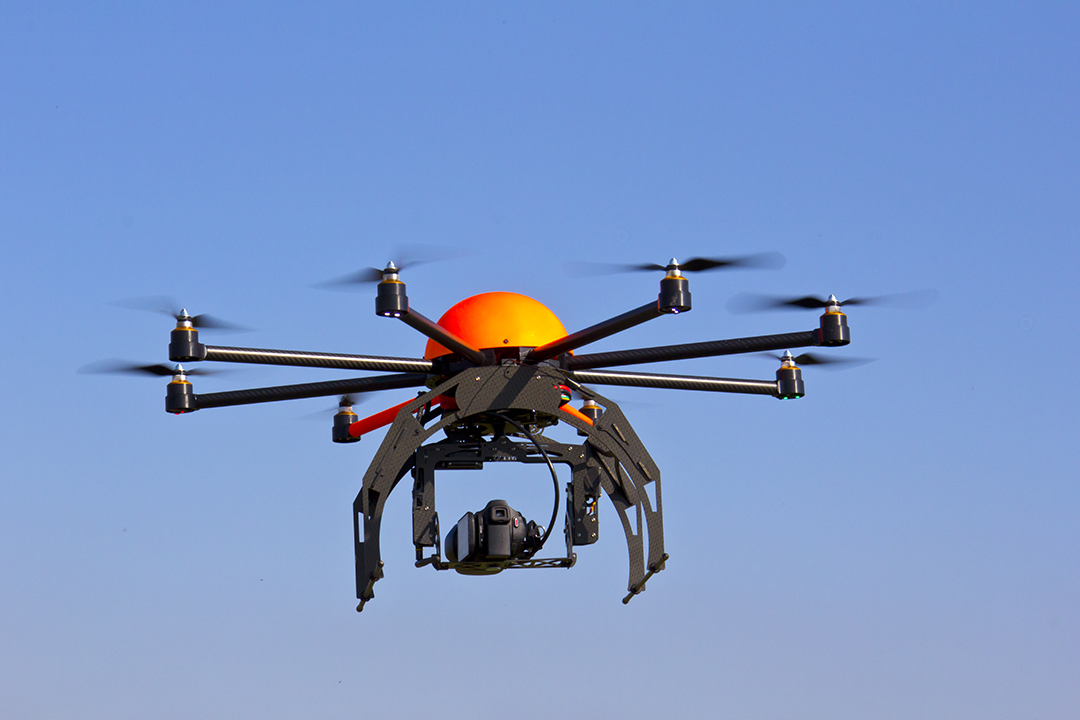There is much in the news these days on privacy concerns relating to the proliferation of drones in the U.S. but not much discussion about the potential criminal factor. Just imagine a robot flying with a gun, chasing an elderly woman into an alley and ordering her to drop her purse. Terrified, she complies and runs away. The robot then swoops down, scoops up the purse, and takes off in flight.
Science fiction? Maybe not. According to Victor Weedn, an accomplished forensic pathologist and chair of the Department of Forensic Sciences, Unmanned Aerial Vehicles (UAVs), or drones, could soon become a major tool in the arsenal of criminals everywhere. His biggest concern is the lack of preparedness by the forensics community for investigating crimes committed using UAVs.
“We anticipate proliferation of UAVs in the civilian community, and it seems to us that we’re not ready for that,” said Weedn, who is coauthoring a paper with public safety technologies expert Anthony Hallett to provide recommendations on the need for forensic examination of unmanned systems. “We in the forensic sciences community need to discuss the implications for what we do, and figure out how to prepare.”
To date, there have been tight restrictions placed by the Federal Aviation Administration on the use of UAVs—sometimes referred to as drones—in public airspace. In 2015, however, those limitations will be lifted, and the use of unmanned flying robots will, in all probability, grow exponentially among hobbyists, businesses, government agencies, and … those harboring criminal intent.
UAVs are also becoming easier to acquire because electronics and communications equipment is relatively inexpensive, further fueling the increased presence of drones across the globe. “The sky is going to be dark with these things,” Chris Anderson, BS ’81, the former editor-in-chief of Wired, recently told The New York Times.
In this country, most UAVs are used for search-and-rescue operations or meticulously photographing disaster areas from above, but there are already documented cases of both smuggling and terrorism operations using drones.
“UAVs enable small groups with modest sums of money to do great harm,” noted Weedn. “Crimes that can be facilitated using drones include theft, arson, vandalism, dropping explosives or biological weapons, secretly videotaping closed events, disabling security equipment, and launching cyber-attacks.”
Weedn, who was the founder and former chief of the Armed Forces DNA Identification Laboratory, recommends the development of databases to help forensic investigators track different types of robots and the tools used to operate UAVs—such as remote controls or electronic control systems. “But, as much as you do that, there will always be people using different trigger mechanisms or control systems, and the varying types become endless.”
He also advocates that forensic scientists adopt more specialized skills. “You need to bring together specialists in radio communications, digital evidence, engineering, and the like to counteract the criminal element.”


